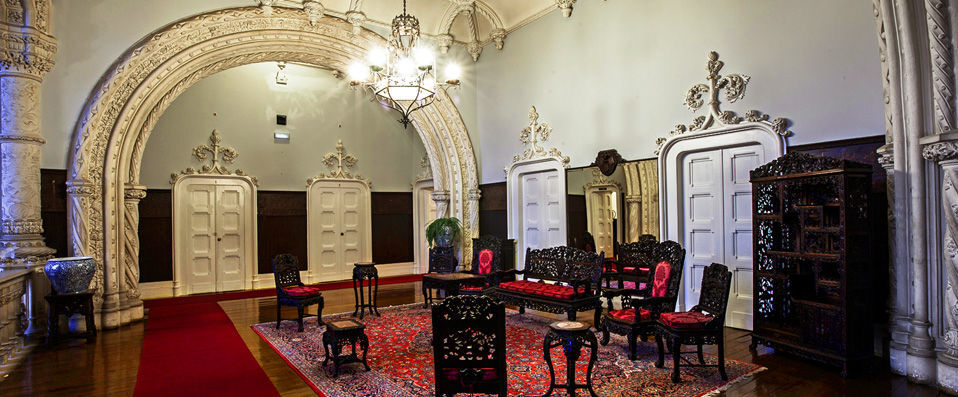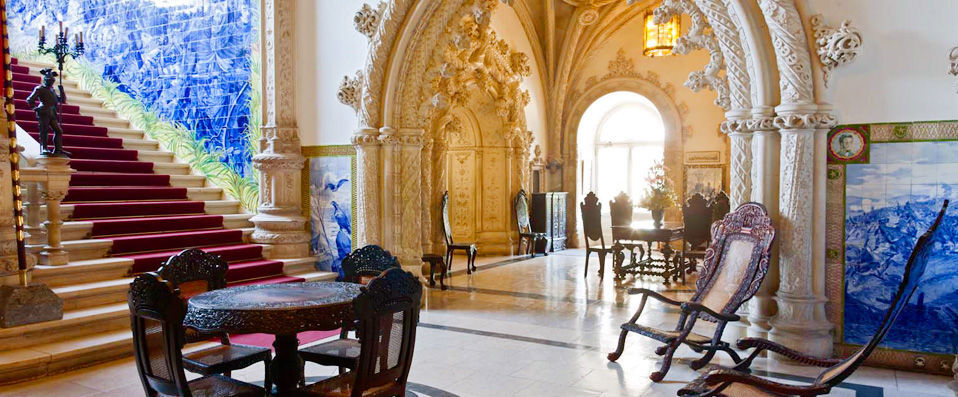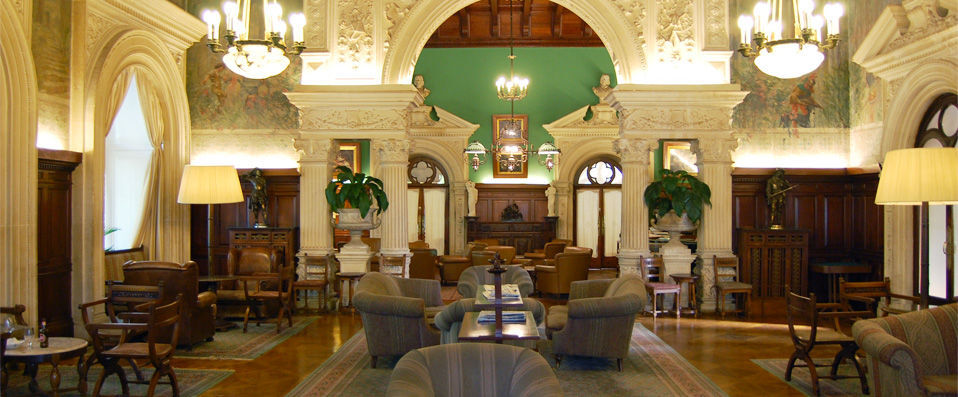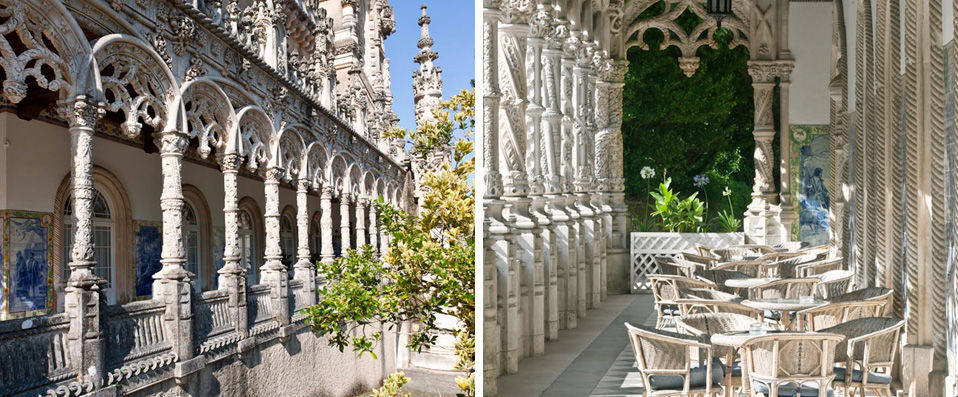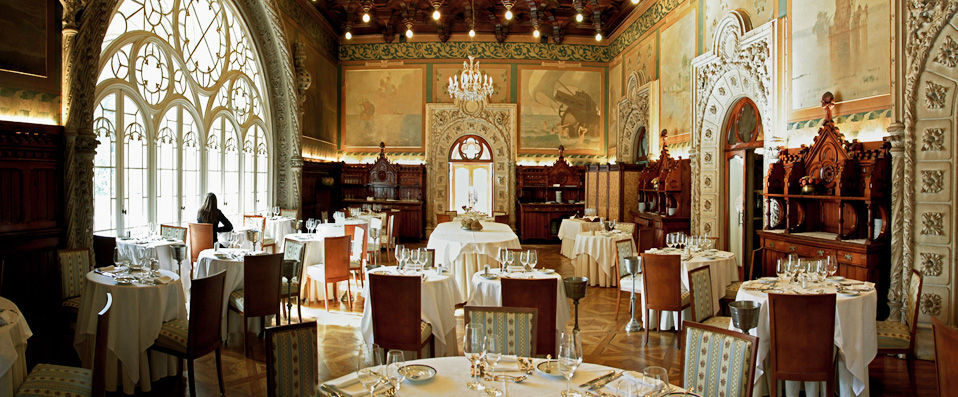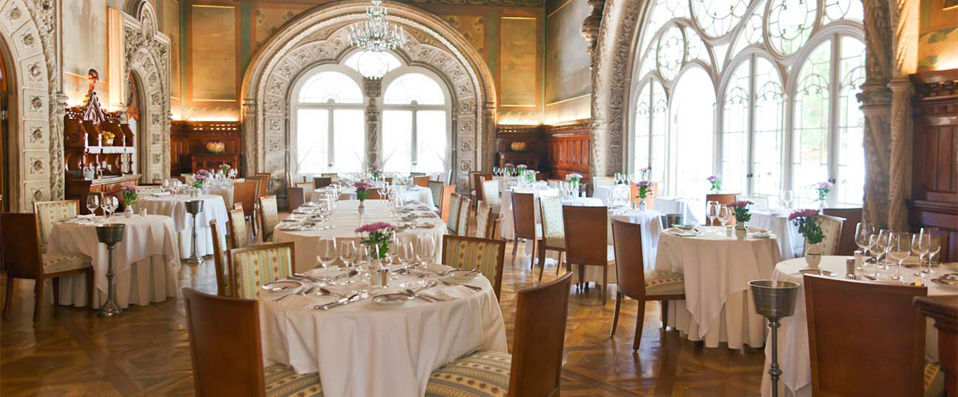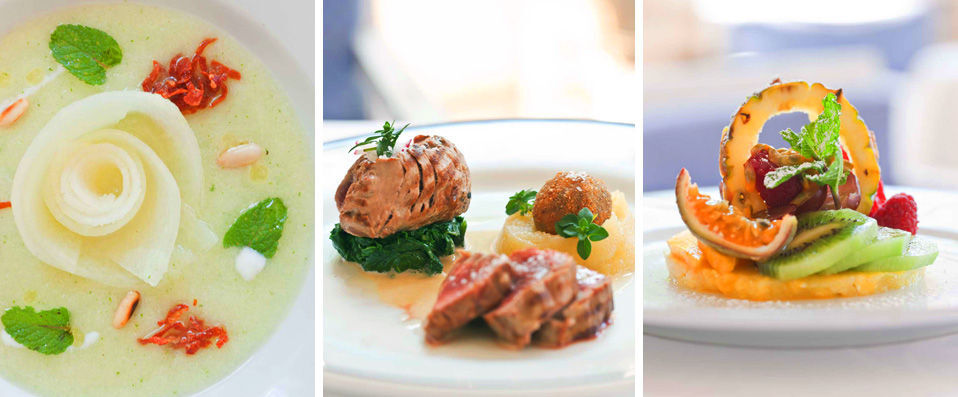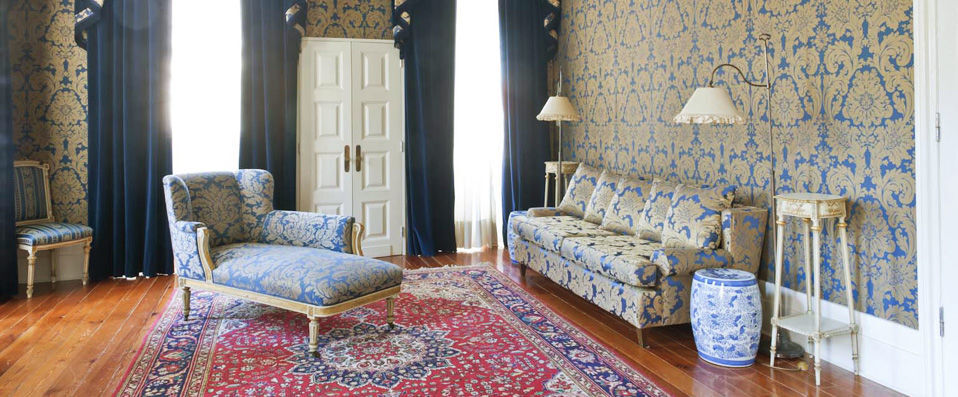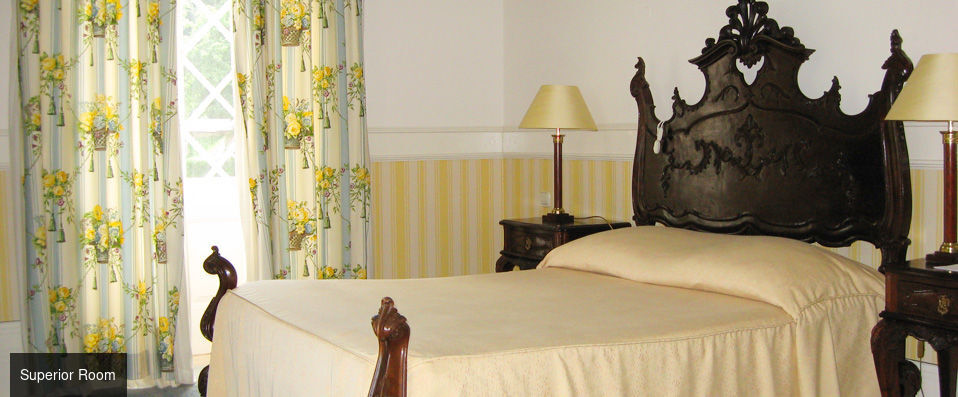This offer has ended
This flash sale is no longer available. Find all our current and upcoming sales:
View all offers The incredible façade, which is a fine example of the Gothic-Manueline architectural style. Its ornate stonework really is a masterpiece.
The incredible façade, which is a fine example of the Gothic-Manueline architectural style. Its ornate stonework really is a masterpiece. The hotel’s fascinating history, that spans back to a time when it acted as the hunting palace for the Kings of Portugal.
The hotel’s fascinating history, that spans back to a time when it acted as the hunting palace for the Kings of Portugal. The beautiful setting of the hotel; surrounded by the Bussaco forest and manicured gardens.
The beautiful setting of the hotel; surrounded by the Bussaco forest and manicured gardens. The restaurant headed by chef Miguel Silva, who invites guests to rediscover Portugal through local produce.
The restaurant headed by chef Miguel Silva, who invites guests to rediscover Portugal through local produce.
Historic getaway in the former hunting palace of Portugal’s kings.
On the streets below, the youthful ambiance of the nightlife burns through the city, locals spilling out into outdoor terraces and students milling around in squares. On this visit, however, I’m trying something new. I’m staying in a palace – a castle, if you will. The Palace Hotel do Bussaco was the former hunting palace of the Kings of Portugal, the Portuguese counterpart of Versailles. As my car pulls up through the Bussaco forest, my heart starts beating a little faster.
The castle is beautiful, a sumptuous display of regal design. Its façade is a perfectly-preserved example of Gothic-Manueline architecture, the surrounding grounds peppered with well-trimmed shrubs and bursts of colourful plants.
The intricacy of the exterior designs, the floral stonework and ornate windows, is reflected inside, too. Huge archways rear up, edged by elaborate detailing, whilst antique furniture sits beneath huge paintings and Portuguese tiles. The Kings obviously had good taste, I think to myself, as I wander through the incredible hallway, the ceiling soaring upwards for metres and metres, and up the wide staircase draped with red carpet. If I didn’t feel like royalty before, I certainly do now. I can’t describe it as anything less than magical, oozing the rich, timeless tapestry of Coimbra’s historic narrative.
As I slowly push open the doors to my room, my breath catches in my throat. Each room is preserved in a time that has long since passed, a few modern amenities replacing the older features, but, for the most part, the rooms remain in an historic state to enhance the beauty of the palace and highlight the magic of Bussaco. I’m more than happy to veto some of my modern-day obsessions in favour of diving head-first into a regal history, but I notice there are still some reminders of the present day, including a satellite TV, hairdryers, air-conditioning, and a mini-bar. I’m sure the kings weren’t party to these luxuries, but it’s a nice way to bridge the gap between old and new.
My room is decorated with period pieces from the eighteenth century, with gold-threaded tapestries, thick curtains, and plush wall-hangings. The window looks out over the stunning hotel grounds, and I watch the gardeners for a moment before heading to dinner, where I sit at a table where former kings once sat, tucking into modern-day Portuguese cuisine, where they dined on banquet food and game from the day’s hunt.
Although my time at the Palace Hotel do Bussaco won’t go down in history and it won’t remain engraved in scriptures, it will remain etched in my memory for a good many years to come!
Superior Room
Stay in a Superior Room for 2 adults


-
- Surface area: 20 m²
-
- Bed type: 1 double bed or twin beds
-
- Bathroom with: bath or shower, toilet, hair dryer, complimentary toiletries
-
- Room with: flat-screen television with satellite channels, heating, Wi-Fi
* No additional beds available in the room
 24-hour reception
24-hour reception
Check in from 3pm & check out by midday 60 rooms (non-smoking)
60 rooms (non-smoking) Wi-Fi available for free in the common areas of the hotel
Wi-Fi available for free in the common areas of the hotel The Royal Restaurant
The Royal Restaurant Private parking available for free
Private parking available for free The establishment provides disabled and limited mobility access
The establishment provides disabled and limited mobility access Pets are not permitted in the establishment
Pets are not permitted in the establishment
- The University of Coimbra is one of the most beautiful attractions in the city. As one of the oldest educational institutions in the world, it plays host to age-old corridors, vintage libraries, and a fascinating history to go with it. Paco das Escolas 3000 Coimbra
- Wander through the beautiful botanical gardens of Coimbra, where you can indulge your senses with the colourful array of exotic plants. It’s the perfect place to take some time out from the hustle and bustle of the city centre. Martim de Freitas Calcada 3000-393, Coimbra
- Grab a drink at the Diligencia Bar, for an authentic experience. Tuck into a delicious cocktail or a bottle of local wine whilst you admire the views and watch life unfold around you. Rua Nova, Coimbra
Palace Hotel do Bussaco ★★★★★
Mata do Bussaco
3050-261
Luso
Portugal
The Hotel Palace Bussaco is located in the Bussaco National Park (125 hectares) next to the Bussaco mountain range and just 30 km from Coimbra.
BY PLANE

Francisco Sá Carneiro Airport (OPO), known more simply as Porto Airport, is located about 124 km / 77 mi (around 1 hour 20 minutes' drive) north of the hotel.
The airport receives flights from many capitals and major cities across Europe.
Alternatively, Humberto Delgado Airport (LIS), also commonly known as "Lisbon Airport", is located 226 km / 140.4 mi (around 2 hours 10 minutes' drive) south of the hotel.
It is a well-served international airport and is the main hub for TAP Portugal as well as a focus city for EasyJet and Ryanair. The airport receives regular flights from most European capitals and a number of other large European cities.
FROM THE AIRPORTS TO THE HOTEL

• Train: from either airports, take a train to Coimbra. From there, it is only a 30 minute taxi ride to the hotel, or take a second train to Luso-Bucaco, a 5 minute taxi ride to the hotel.
• Car: considering the secluded location of the hotel, driving is practical and economical option in order to both reach the hotel and explore the area during your stay.
- Covid-19 health & travel rules for France:
Visit the official EU Reopen website to learn about the current local health situation, and entry requirements from EU / Schengen countries or from countries outside the EU / Schengen Area - Local tourist taxes are not included in the VeryChic rates: 2€ per person, per night (to be paid directly to the hotel)
From Monday to Friday from 9 a.m. to 7 p.m. and on Saturdays, Sundays and French bank holidays from 9 a.m. to 6 p.m.
Local call charges may apply.